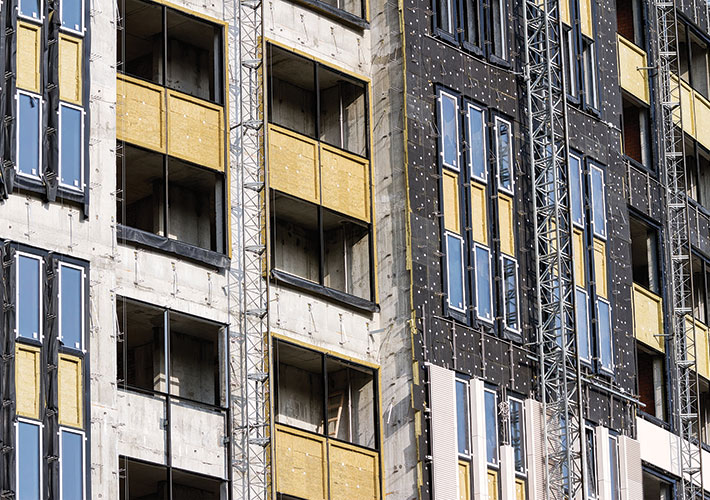Market Access with Standards

Market Access with Standards
Soprema, the multinational building products manufacturer with North American headquarters in Canada, complies with international codes and stays abreast of technology updates by using ASTM standards.
Soprema, a privately held company founded in 1908 in Strasbourg, France, began by providing bituminous roofing and sealing materials. One of the early products introduced by Soprema is the MAMMOUTH® (French for mammoth), which became the emblem of the company.
Today, Soprema is managed by its founder's great-grandson and remains a global leader in polymer-modified bituminous materials used in the complete building envelope sector (roofing, air barrier, waterproofing) and civil engineering projects. Throughout its history, Soprema has greatly diversified its product offerings, adding other technologies such as liquid membranes (based on PMMA/PMA or polyurethane chemistry), synthetic roof membranes, vegetated roofs and walls, building-integrated photovoltaics, roofing accessories and, more recently, the manufacturing of thermal and acoustical insulation products.
For a construction material to be used in a building, several rules apply. Products not only need to serve their intended purpose, but they must also contribute to the safety of buildings and their occupants. In many countries, construction codes are adopted by government or public agencies and their level of enforcement will vary depending on various factors, including culture, but also on the number and experience of building officials.
Being part of a manufacturer who sells in numerous countries, we have to be aware of the various construction code requirements to ensure the compliance of our products in every country. Adjustments to products may be required to meet local regulations, which can sometimes create multiple versions of the same product used for the same purpose in different regions.
Fortunately, the international recognition of ASTM standards leads to their use in many countries; construction codes often reference ASTM standards. Code compliance can sometimes be demonstrated by meeting the requirements of a single ASTM standard specification. Such situations significantly reduce the complexity of market penetration for our products in a foreign market.
In Canada, there are some CSA standards used in roofing that are adaptations of ASTM standards. In such cases of collaboration between both organizations, the largest portion of the ASTM document is used with some specific Canadian deviations.1
Other standalone Canadian standards have their own set of requirements, but the test methods used to measure product performance are all ASTM test methods. The CSA A123.23 standard, Product Specification for Polymer-Modified Bitumen Sheet, Prefabricated and Reinforced, for example, references and uses ASTM test methods D5147 and D5602 (D5147, Test Methods for Sampling and Testing Modified Bituminous Sheet Material, and D5602, Test Method for Static Puncture Resistance of Roofing Membrane Specimens. Canada is not the only country where ASTM standards are referenced in national standards. The Singapore standard SS 374, Preformed Waterproofing Membranes for Concealed Roofs, is just one example of the international reach of ASTM documents that we encountered.
Strong and direct references to ASTM standards facilitate product development because our colleagues involved in R&D are familiar with these standards and use them on a regular basis. They can more efficiently predict the potential impact of a product modification to the result of a test performed according to a known standard. When needed, they can adjust the composition of a product to ensure it meets the required level of performance.
It comes to no surprise that Soprema makes a priority of participating in the development and evolution of ASTM standards by having several participants (from the United States and Canada) in the task groups and committee meetings. The stakes are high, not only for the domestic markets but also throughout the world.
Soprema's participation is obviously more important in Committee D08 on Roofing and Waterproofing, although our recent addition of thermal insulation manufacturing capabilities in Canada has triggered the beginning of our participation in Committee C16 on Thermal Insulation. Of particular importance and interest is C1289, Specification for Faced Rigid Cellular Polyisocyanurate Thermal Insulation Board (and its Canadian cousin CAN/ULC-S704.1, Standard for Thermal Insulation, Polyurethane and Polyisocyanurate, Boards, Faced, as well as other standards in C16.
Current work items in Committee D08 include new standard test methods for self-adhesive bituminous roofing sheets and liquid-applied membranes. These are very important topics for our industry and, when finalized and published, these test methods will not only be referenced in upcoming product specifications developed within ASTM, but also be used as building blocks for documents that standard developing organizations in other countries will publish.
Note
1. For example, the CSA A123.22 standard is an adaptation of ASTM D1970.
Jean-François Côté, Ph.D., is director of strategic development at Soprema. He is recording secretary for Committee D08 on Roofing and Waterproofing and co-chair of Subcommittee D08.04 on Felts, Fabrics and Bituminous Sheet Materials.
Company Snapshot
SOPREMA: SOciété des PRoduits d'Etanchéité MAmmouth
Manufacturing of roofing, waterproofing, thermal and acoustical insulation materials for the building envelope and civil engineering.
Market: Global
2014 Sales: 1.92 billion Euros (global)
Number of staff: 5600+ (global), 730+ (North America)
Number of staff who are ASTM members: 5
ASTM committees with Soprema participation: C16, D08, E05, E60